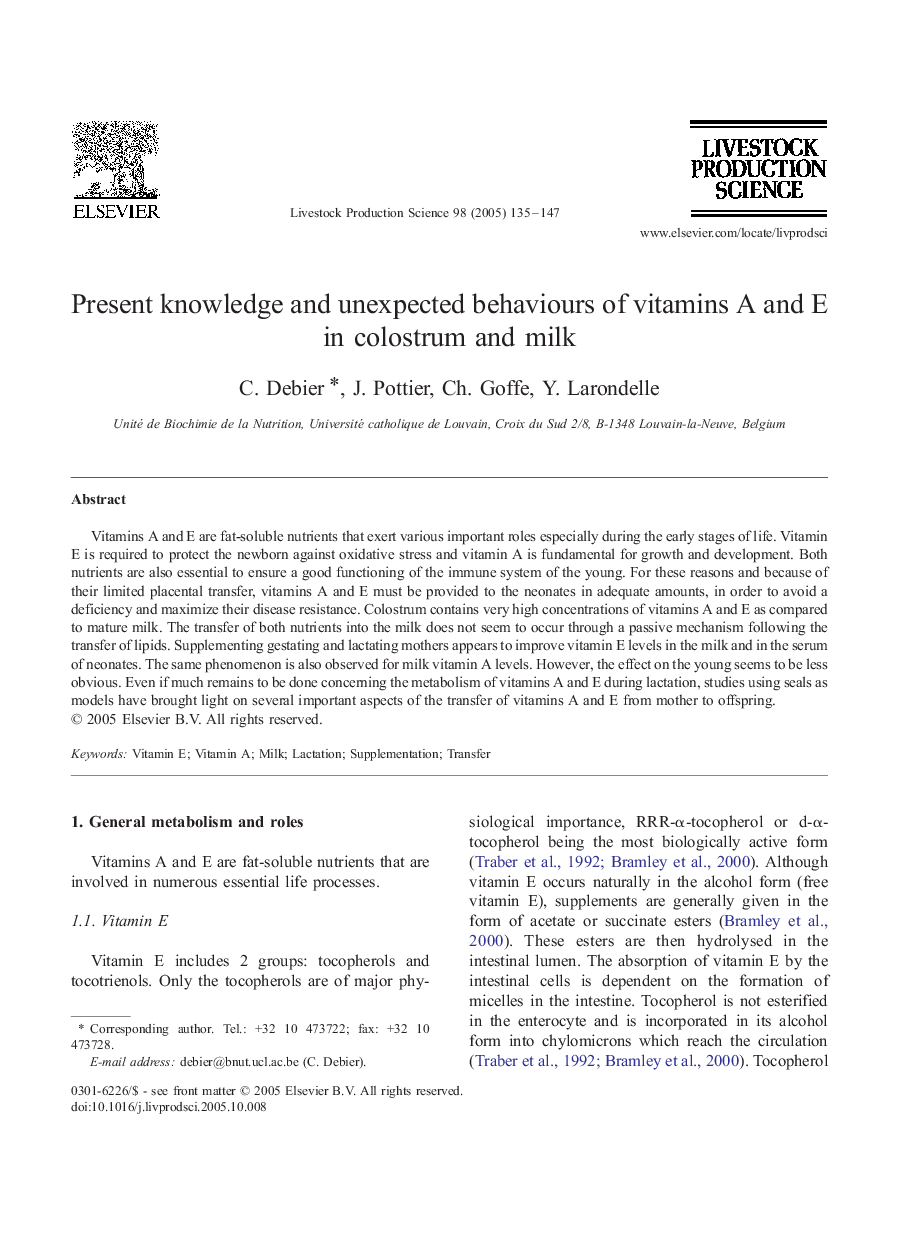| Article ID | Journal | Published Year | Pages | File Type |
|---|---|---|---|---|
| 8982567 | Livestock Production Science | 2005 | 13 Pages |
Abstract
Vitamins A and E are fat-soluble nutrients that exert various important roles especially during the early stages of life. Vitamin E is required to protect the newborn against oxidative stress and vitamin A is fundamental for growth and development. Both nutrients are also essential to ensure a good functioning of the immune system of the young. For these reasons and because of their limited placental transfer, vitamins A and E must be provided to the neonates in adequate amounts, in order to avoid a deficiency and maximize their disease resistance. Colostrum contains very high concentrations of vitamins A and E as compared to mature milk. The transfer of both nutrients into the milk does not seem to occur through a passive mechanism following the transfer of lipids. Supplementing gestating and lactating mothers appears to improve vitamin E levels in the milk and in the serum of neonates. The same phenomenon is also observed for milk vitamin A levels. However, the effect on the young seems to be less obvious. Even if much remains to be done concerning the metabolism of vitamins A and E during lactation, studies using seals as models have brought light on several important aspects of the transfer of vitamins A and E from mother to offspring.
Related Topics
Life Sciences
Agricultural and Biological Sciences
Animal Science and Zoology
Authors
C. Debier, J. Pottier, Ch. Goffe, Y. Larondelle,
